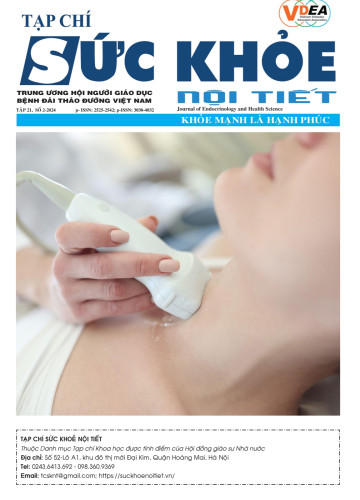Đăng ký
Vui lòng nhập các thông tin cần thiết

TÀI LIỆU THAM KHẢO
1. M. R. Patel, K. W. Mahaffey, J. Garg, G. Pan, D. E. Singer, W. Hacke, et al. (2011). Rivaroxaban versus warfarin in nonvalvular atrial fibrillation. N Engl J Med. 2011;365(10):883-91.
2. S. J. Connolly, M. D. Ezekowitz, S. Yusuf, J. Eikelboom, J. Oldgren, A. Parekh, et al (2009). Dabigatran versus warfarin in patients with atrial fibrillation. N Engl J Med. 2009;361(12):1139-51.
3. Phạm Thị Minh Đức (2011). Sinh lý học. Nhà xuất bản Y học, Hà Nội.
4. Hồ Huỳnh Quang Trí (2016). Điều trị chống đông. Tạp chí Y học Thành phố Hồ Chí Minh. 2016;12(3).
5. A. Chen, E. Stecker, A. Warden B. (2020). Direct Oral Anticoagulant Use: A Practical Guide to Common Clinical Challenges. J Am Heart Assoc. 2020;9(13):e017559.
6. A. Kapoor, A. Ellis, N. Shaffer, J. Gurwitz, A. Chandramohan, J. Saulino, et al. (2017). Comparative effectiveness of venous thromboembolism prophylaxis options for the patient undergoing total hip and knee replacement: a network meta-analysis. J Thromb Haemost. 2017;15(2):284-94.
7. M. Ieko, S. Naitoh, M. Yoshida, N. Takahashi (2016). Profiles of direct oral anticoagulants and clinical usage-dosage and dose regimen differences. J Intensive Care. 2016;4:19.
8. P. M. Mannucci, M. Franchini (2011). Old and new anticoagulant drugs: a minireview. Ann Med. 2011;43(2):116-23.
9. L. Q. Guo, Y. Yamazoe (2004). Inhibition of cytochrome P450 by furanocoumarins in grapefruit juice and herbal medicines. Acta Pharmacol Sin. 2004;25(2):129-36.
10. G. Grześk, D. Rogowicz, Ł Wołowiec, A. Ratajczak, W. Gilewski, M. Chudzińska, et al (2021). The Clinical Significance of Drug-Food Interactions of Direct Oral Anticoagulants. Int J Mol Sci. 2021;22(16).
11. H. J. Oh, K. H. Ryu, B. J. Park, B. H. Yoon (2021). The risk of gastrointestinal hemorrhage with non-vitamin K antagonist oral anticoagulants: A network meta-analysis. Medicine (Baltimore). 2021;100(11):e25216.
12. Y. Numasawa, S. Kohsaka, I. Ueda, H. Miyata, M. Sawano, A. Kawamura, et al (2017). Incidence and predictors of bleeding complications after percutaneous coronary intervention. J Cardiol. 2017;69(1):272-9
13. Nguyễn Quốc Linh Nguyễn Anh Tuấn (2023). Một số biến chứng khi sử dụng Heparin trên bệnh nhân thực hiện kĩ thuật tim phổi nhân tạo. Tạp chí Y học Việt Nam. 2023;524(3).
14. O. Ben-Yehuda, B. Redfors (2016). Validation of the Bleeding Academic Research Consortium Bleeding Definition: Towards a Standardized Bleeding Score. J Am Coll Cardiol. 2016;67(18):2145-7.
15. Thái Doãn Kỳ Nguyễn Đức Ninh, Nguyễn Hải Ghi, Nguyễn Ngọc Quang (2021). Đặc điểm lâm sàng và hình ảnh nội soi chảy máu tiêu hoá do loét dạ dày tá tràng ở bệnh nhân có dùng thuốc chống huyết khối. Tạp chí Y dược lâm sàng 108. 2021;16(5).
16. A. R. Choe, C. M. Moon, C. H. Tae, J. Chun, K. B. Bang, Y. J. Lee, et al. (2021). Characteristics, Location, and Clinical Outcomes of Gastrointestinal Bleeding in Patients Taking New Oral Anticoagulants Compared to Vitamin K Antagonists. J Clin Med. 2021;10(12).
17. J. P. Bassand, S. Virdone, M. Badoz, F. W. A. Verheugt, A. J. Camm, F. Cools, et al. (2021). Bleeding and related mortality with NOACs and VKAs in newly diagnosed atrial fibrillation: results from the GARFIELD-AF registry. Blood Adv. 2021;5(4):1081-91.
18. S. Pannach, J. Goetze, S. Marten, T. Schreier, L. Tittl, J. Beyer-Westendorf (2017). Management and outcome of gastrointestinal bleeding in patients taking oral anticoagulants or antiplatelet drugs. J Gastroenterol. 2017;52(12):1211-20.
19. Karateev A. Moroz E., et al. (2017). Gastrointestinal bleeding with the use of new oral anticoagulants: Epidemiology, risk factors, treatment, and prevention. Rheumatology Science and Practice. 2017;55.
Tóm tắt: Trong việc điều trị bệnh nhân có nguy cơ hình thành cục máu đông, thuốc chống đông đường uống đóng vai trò quan trọng. Tuy nhiên, lựa chọn giữa hai nhóm chính - thuốc đối kháng vitamin K (VKA) và thuốc chống đông đường uống thế hệ mới (NOAC) - mang đến nhiều vấn đề liên quan đến nguy cơ chảy máu và các biến chứng. Nhóm thuốc NOAC có nguy cơ chảy máu tổng thể thấp hơn VKA, song nguy cơ chảy máu đường tiêu hoá lại cao hơn, đặc biệt là xuất huyết tiêu hoá. Biến chứng chảy máu tiêu hóa có thể ở mức 2-3% hàng năm ở người sử dụng NOAC, do vậy cần phải có nhiều hiểu biết, minh chứng khoa học để có biện pháp quản lý và dự phòng. Nghiên cứu tổng quan về NOAC rất quan trọng, nhằm đảm bảo an toàn và hiệu quả trong điều trị các bệnh lý liên quan đến hình thành cục máu đông.
Từ khóa: đông cầm máu, huyết khối, thuốc chống đông
OVERVIEW OF NOVEL ORAL ANTICOAGULANTS IN THROMBOEMBOLISM TREATMENT
Summary: Oral anticoagulants play a crucial role in the treatment of patients at risk of thromboembolism. However, choosing between the two main classes—vitamin K antagonists (VKAs) and novel oral anticoagulants (NOACs)—raises concerns related to bleeding risks and complications. NOACs are generally associated with a lower overall bleeding risk compared to VKAs, but they present a higher risk of gastrointestinal bleeding, particularly in the form of gastrointestinal hemorrhage. The incidence of gastrointestinal bleeding can range from 2-3% annually among NOAC users, highlighting the need for a deep understanding and scientific evidence to guide management and prevention strategies. Comprehensive research on NOACs is essential to ensure safety and efficacy in the treatment of thromboembolic disorders.
Keywords: hemostasis, thrombosis, anticoagulants.